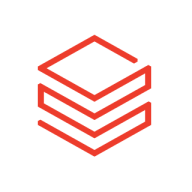

Databricks and Google Cloud Datalab compete in big data analytics. Databricks holds an advantage in pricing and support, while Google Cloud Datalab is noted for its expansive feature set.
Features: Databricks offers seamless integration with Apache Spark, advanced analytics tools, and effective collaboration options. Google Cloud Datalab integrates smoothly with Google Cloud services, simplifies machine learning model development, and provides strong data visualization capabilities.
Room for Improvement: Databricks could enhance user interface aesthetics, offer more extensive API documentation, and improve cross-platform compatibility. Google Cloud Datalab could benefit from optimized resource allocation, reducing initial setup complexities, and enhancing node configuration processes.
Ease of Deployment and Customer Service: Databricks offers flexible deployment and responsive customer service with easy integration on existing platforms. Google Cloud Datalab benefits from scalable deployment within Google Cloud's infrastructure, providing a streamlined setup.
Pricing and ROI: Databricks is cost-effective with a favorable ROI due to efficient resource use. Google Cloud Datalab has higher setup costs but delivers substantial ROI through integration with Google's ecosystem.
| Product | Market Share (%) |
|---|---|
| Databricks | 10.7% |
| Google Cloud Datalab | 1.2% |
| Other | 88.1% |

| Company Size | Count |
|---|---|
| Small Business | 25 |
| Midsize Enterprise | 12 |
| Large Enterprise | 56 |
Databricks offers a scalable, versatile platform that integrates seamlessly with Spark and multiple languages, supporting data engineering, machine learning, and analytics in a unified environment.
Databricks stands out for its scalability, ease of use, and powerful integration with Spark, multiple languages, and leading cloud services like Azure and AWS. It provides tools such as the Notebook for collaboration, Delta Lake for efficient data management, and Unity Catalog for data governance. While enhancing data engineering and machine learning workflows, it faces challenges in visualization and third-party integration, with pricing and user interface navigation being common concerns. Despite needing improvements in connectivity and documentation, it remains popular for tasks like real-time processing and data pipeline management.
What features make Databricks unique?
What benefits can users expect from Databricks?
In the tech industry, Databricks empowers teams to perform comprehensive data analytics, enabling them to conduct extensive ETL operations, run predictive modeling, and prepare data for SparkML. In retail, it supports real-time data processing and batch streaming, aiding in better decision-making. Enterprises across sectors leverage its capabilities for creating secure APIs and managing data lakes effectively.
Cloud Datalab is a powerful interactive tool created to explore, analyze, transform and visualize data and build machine learning models on Google Cloud Platform. It runs on Google Compute Engine and connects to multiple cloud services easily so you can focus on your data science tasks.
We monitor all Data Science Platforms reviews to prevent fraudulent reviews and keep review quality high. We do not post reviews by company employees or direct competitors. We validate each review for authenticity via cross-reference with LinkedIn, and personal follow-up with the reviewer when necessary.